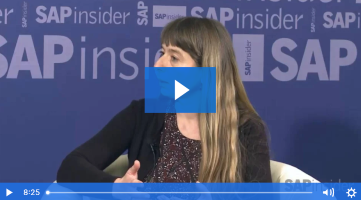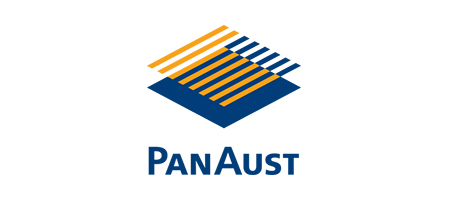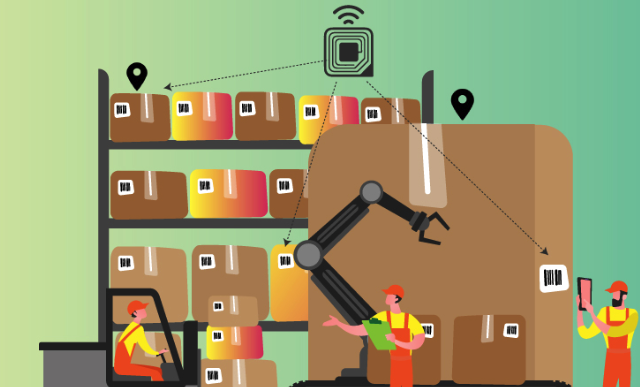AGL Energy Tracks and Traces Tens of Thousands of Serialized Rotable Parts
Rotable Planners Schedule Repairs to Minimize Waste
by Pierce Owen, VP of Research and Publishing, SAPinsider
Most (70%) SAP customers have integrated product or asset requirements to product models to support traceability of parts, according to SAPinsider’s “Intelligent PLM Benchmark Report.” One of those customers, AGL Energy, uses this integrated data to trace rotable parts through an SAP Fiori app implemented at the same time as SAP S/4HANA.
SAPinsider recently interviewed Ruksana Azim, SAP S/4HANA Supply Chain Specialist at AGL, an Australian energy business accounting for approximately 20% of the total generation capacity within Australia. AGL has around 3.7 million customers including residential, business, and wholesale customers. This research brief shares the story of how AGL uses its SAP Fiori app integrated with SAP S/4HANA to track rotable and repairable parts for its assets.
Siloed Processes Cause Inefficient Use of Rotable Parts
Before implementing its SAP Fiori app and SAP S/4HANA, AGL handled repairable and rotable parts slightly differently at each site. Managers knew they needed to regularly repair and rotate these parts to keep operations running at the lowest cost, but each location had a different idea of how to do that. Managers and workers at each site thought they knew where parts were, but they all used their own spreadsheets, which did not always accurately reflect reality.In addition to the spreadsheets, many sites purchased their own third-party solutions, but none of these had the functionality to manage rotable parts down to the serial number or condition.
At that time, the maintenance department held responsibility for initiating repairs. “The maintenance workers would dismantle high value assets and rotable parts, but we did not have a proper process in place to manage those parts,” shared Ruksana Azim.
At the end of a year, the maintenance department would return all those parts from the plants to the warehouses. However, many of the parts had worn down, and this made it difficult to judge their condition, according to Ruksana Azim.
Sometimes, AGL sent the parts to vendors for repair, but it would not always track when or where it sent the parts.
Redesigning the Rotable Processes
When AGL started implementing SAP S/4HANA, its warehouse, maintenance, and IT teams realized they had an opportunity to redesign the process for managing rotable parts and to integrate the process with the core ERP functionality in SAP S/4HANA.
AGL teams started by tracking down every rotable and repairable part in its work sites and warehouses. They also tracked down those that had been sent to vendors. After locating each part, they analyzed its state and condition and entered that data into SAP S/4HANA.
Next, the business transitioned responsibility for the use, repair, storage, and reuse of rotable parts from its maintenance teams to its warehousing teams. “When the data shows that a part needs preventive maintenance, the warehouse team calls and chases the maintenance teams to replace the rotable parts and deliver them to the warehouse for repairs,” said Ruksana Azim.
Additionally, AGL trained several rotable planners at each site to use a new SAP Fioribased “Repairable Cockpit” app integrated with SAP S/4HANA to manage the schedules for preventive maintenance and part rotation. In total, it has six sites and eighteen key users of the app who manage this process. AGL’s IT team developed the app entirely in house.
Whether parts break during maintenance or need rotation at a regular rate, the rotable planners now hold responsibility for scheduling repairs and rotation of the parts on the app. The maintenance technicians repair what they can and send written reports on each part to the rotable planners. If they could not repair the part themselves, the rotable planners decide whether to scrap a part beyond salvation or to send it to a vendor for repair.
If they send a part to a vendor, they send the part and a purchase order (PO) to that vendor, who makes the decision on whether it can be repaired or if it needs replacing. The vendor then sends the refurbished part back to the warehouse. If the part needs replacing, the vendor lets AGL know that it needs a new part and reissues that part.
All this data syncs up in SAP S/4HANA.
As a result, 100% of all repairs now go through a PO or subcontract in SAP S/4HANA. Also, AGL has total traceability tens of thousands serialized rotable parts with thousands of stock-keeping units (SKUs).
The business stakeholders including the rotable planners, warehouse managers, and maintenance workers have all demonstrated understanding and satisfaction with the solution where before, most were resistant to using SAP software. The cockpit app has simplified the process. “This has been one of the best things I’ve been able to do because I helped make so many people’s jobs easier,” concluded Ruksana Azim.
What Does This Mean for SAPinsiders?
Based on our research and the interview with Ruksana Azim, the following considerations can help SAP customers improve their own repairable and rotable processes:
- Reconsider which business user should own the rotable process. AGL originally had maintenance managing rotable parts because that department worked closest with the parts. After analyzing the workflows, it realized that warehousing had a stronger incentive to manage those parts.
- Double-check all data for high-value parts. Before implementing its Repairable Cockpit app, AGL did not have reliable data on its high-value rotable parts and lacked the capabilities to serialize and track the condition of those parts. Before it could implement that capability, it had to ensure that it had clean, accurate data.
- Put 100% of repairs in POs or subcontracts. No one can accurately track and trace parts if repairs are ordered outside of a company’s core ERP system. Processes should be implemented that record and track all repairs in the system.
- Use the migration to SAP S/4HANA to re-engineer processes to better fit operational needs. Many SAP customers such as AGL see the migration to SAP S/4HANA as an opportunity to centralize and consolidate more processes and adopt best-practice process models. No matter how organizations deploy SAP S/4HANA, they may have to redesign many processes. If a process must be redesigned either way, it is worth taking the time to analyze and optimize those processes with pain points.
Following this strategic guidance should help SAP customers optimize processes in a way that empowers them to track and trace parts or inventory.
Pierce Owen, VP of Research and Publishing, SAPinsider, can be reached at Pierce.Owen@wispubs.com.





